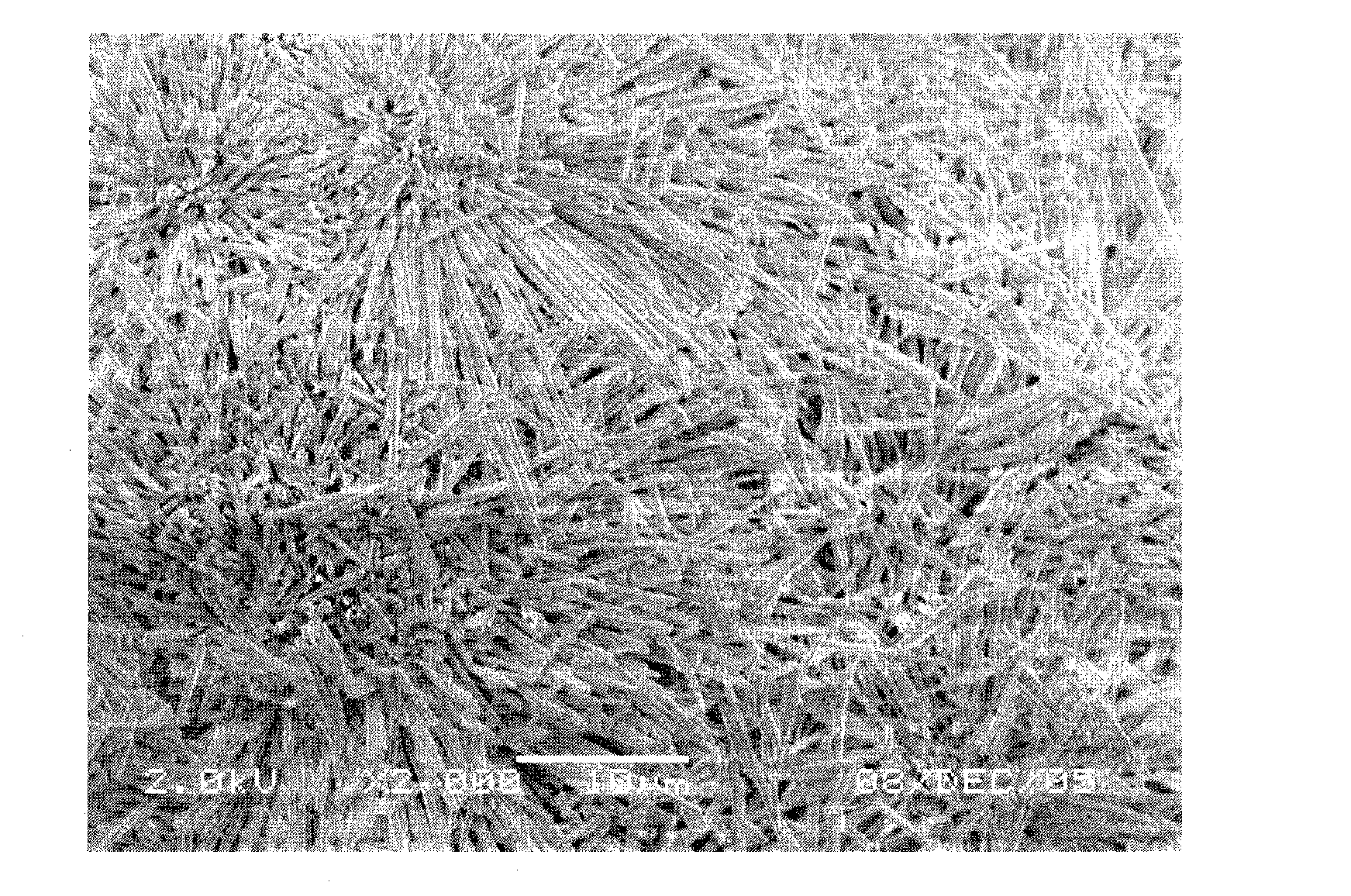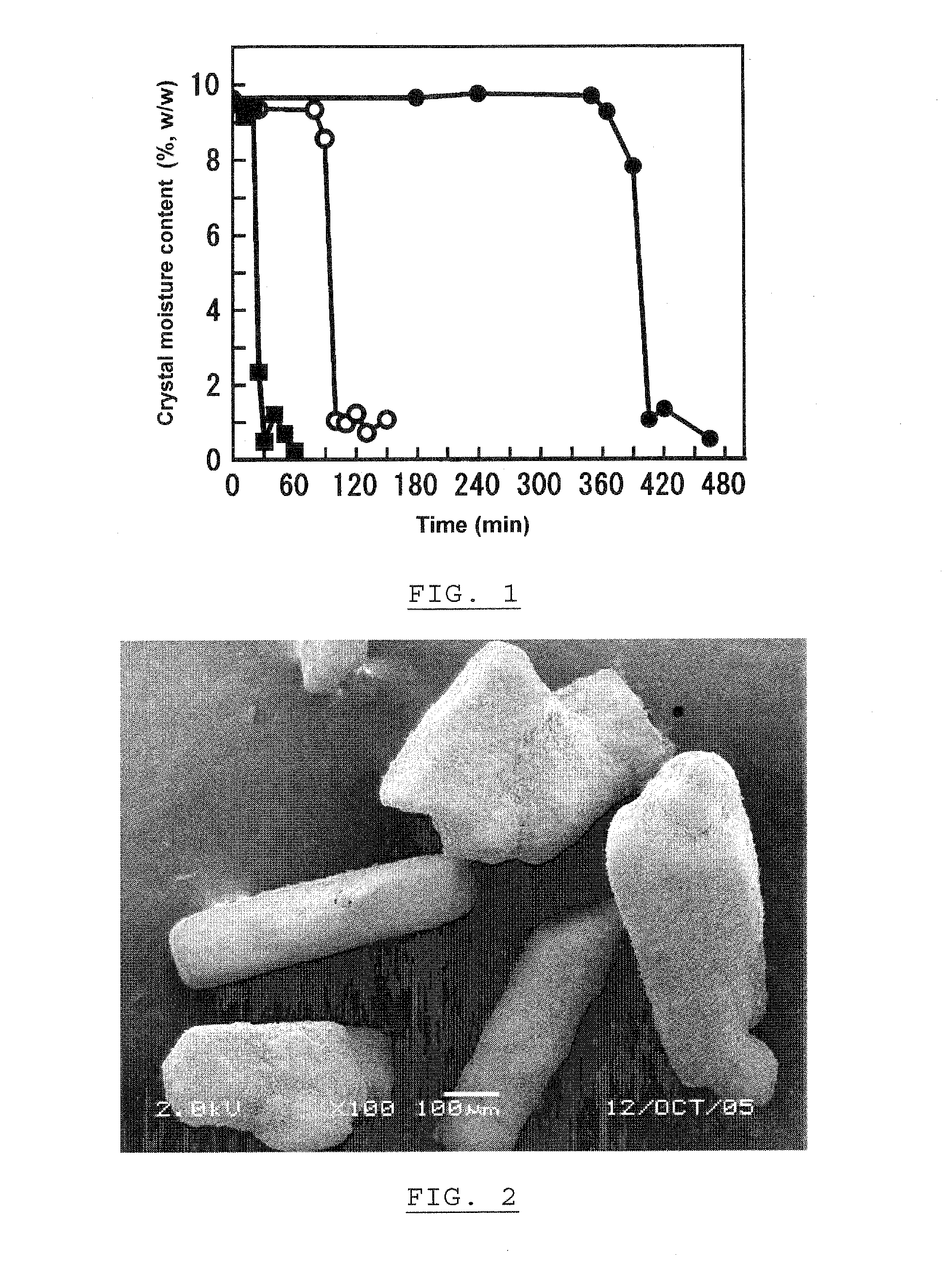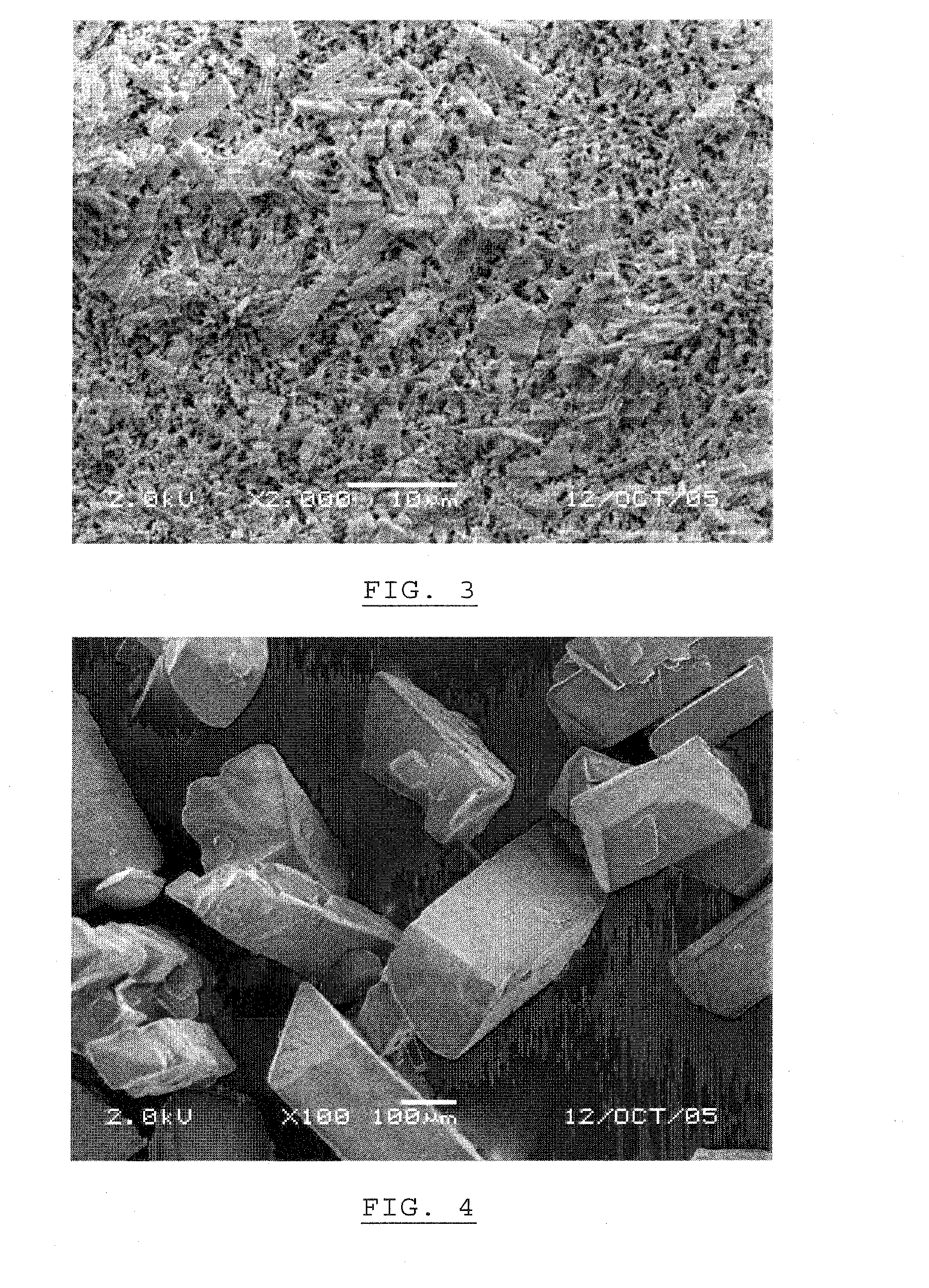Porous crystalline saccharide, its preparation and uses
a technology crystalline saccharide, which is applied in the field of porous crystalline saccharide, can solve the problems of not being produced in an industrial scale, and achieve the effects of good solubility, advantageous use, and large specific surface area
- Summary
- Abstract
- Description
- Claims
- Application Information
AI Technical Summary
Benefits of technology
Problems solved by technology
Method used
Image
Examples
example 1
Preparation of the Porous Anhydrous Crystalline Trehalose from Hydrous Crystalline Trehalose
[0082]In a 2-L round bottom flask attached with a stirrer and a thermometer, 1,200 ml of ethanol was placed and preheated at 50° C., 60° C., or 70° C. Then, 120 g of “TREHA®”, a hydrous crystalline trehalose product with a trehalose purity of 99.2%, commercialized by Hayshibara Shoji Inc., Okayama, Japan, was admixed with the preheated ethanol and stirred at 170 rpm. At constant intervals, about 100 ml each of the crystal suspension was withdrawn and centrifuged to separate solid and liquid using a basket-type centrifugal separator, and the ethanol adherent to the crystal surface was removed by spreading the collected crystal onto a palette and drying in a circulation dryer at 50° C. for 20 min. The moisture content of the resulting crystal was measured by the conventional Karl Fischer's method. Effects of the temperatures of the ethanol treatment on the time course of the moisture content of...
example 2
Physical Properties of the Porous Anhydrous Crystalline Trehalose
[0086]Specific surface area, pore size distribution, powdery X-ray diffraction diagram, and endothermic pattern on differential scanning calorimetry of the porous anhydrous crystalline trehalose, obtained in Example 1, were measured.
example 2-1
Specific Surface Area of the Porous Anhydrous Crystalline Trehalose
[0087]Specific surface area of the porous anhydrous crystalline trehalose was measured by the nitrogen adsorption isotherms using “MODEL ASAP-2400”, a specific surface area / pore size distribution analyzer commercialized by Micromeritics, Georgia, USA. About 3 g each of the porous anhydrous crystalline trehalose, obtained by treating in ethanol at 50° C. for 456 min or at 70° C. for 60 min in Example 1, was dried in the apparatus under reduced pressure at about 40° C. for about 15 hours as a pretreatment, and then used for the measurement of specific surface area by the nitrogen adsorption isotherms. The result was analyzed by the BET (Brunnauer, Emmet, and Teller) method. The commercial anhydrous crystalline trehalose, a reagent grade, commercialized by Hayashibara Biochemical Laboratories Inc., Okayama, Japan, was used as a control. The results are in Table 2.
TABLE 2Specific surface areaSample(m2 / g)Anhydrous crystal...
PUM
| Property | Measurement | Unit |
|---|---|---|
| specific surface area | aaaaa | aaaaa |
| pore size diameter | aaaaa | aaaaa |
| specific surface area | aaaaa | aaaaa |
Abstract
Description
Claims
Application Information
 Login to View More
Login to View More - R&D
- Intellectual Property
- Life Sciences
- Materials
- Tech Scout
- Unparalleled Data Quality
- Higher Quality Content
- 60% Fewer Hallucinations
Browse by: Latest US Patents, China's latest patents, Technical Efficacy Thesaurus, Application Domain, Technology Topic, Popular Technical Reports.
© 2025 PatSnap. All rights reserved.Legal|Privacy policy|Modern Slavery Act Transparency Statement|Sitemap|About US| Contact US: help@patsnap.com



